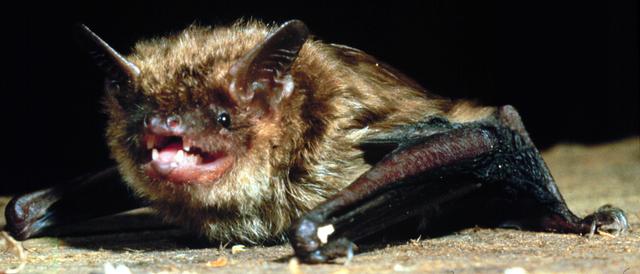Selenoproteïnes en Eptesicus fuscus
Cebrián M.C, Franco M, Gallardo P, Gallego E.
| ABSTRACT | INTRODUCCIÓ | MATERIALS I MÈTODES | RESULTATS | DISCUSSIÓ | CONCLUSIONS | REFERÈNCIES | AGRAÏMENTS | CONTACTA'NS |
RESUM
Les selenoproteïnes són proteïnes que presenten l'aminoàcid 21, la selenocisteïna (Sec, U), en la seva seqüència. Aquest aminoàcid està codificat pel codó UGA, que és considerat la majoria dels cops com a codó de terminació de la traducció. La presència d'un element SeCiS a la regió 3' permet que s'incorpori una Sec en presència del codó UGA. El fet de que hi hagi una doble codificació per a aquest codó fa que l'anotació de les selenoproteïnes sigui complexa.
L'objectiu d'aquest projecte és anotar tant les selenoproteïnes del genoma com la maquinària necessària per a la síntesi d'aqustes en el genoma d'Eptesicus fuscus, un ratpenat típic de Nord-Amèrica. Per a fer-ho s’han utilitzat diferents eines de bioinformàtica: les bases de dades de SelenoDB i NCBI i els programes T-Blastn, Blastp, filogènia, Exonerate, Genewise, T-Coffee i Seblastian. Com a genomes de referència hem utilitzat Myotis lucifugus i, en els casos en que l'anotació no estigues ben feta, Homo sapiens.
Els resultats obtinguts s'han anat contrastant durant tot el procés amb els coneixements previs sobre el selenoproteoma de vertebrats i mamífers.
Després dels anàlisis convenients del genoma d’Eptesicus fuscus, hem detectat totes les selenoproteïnes esperades excepte la GPx6 i resultats dubtosos en SPS2. Pel que fa a l'anàlisi dels homòlegs de cisteïna, s'han trobat totes les proteïnes esperades (tot i els resultats dubtosos de GPX5) i no podem afirmar la presència de GPX8. A més, es necessitaria més anàlisi per determinar la presència de SelU2. Per últim, l'estudi de la maquinària de síntesi de selenoproteïnes ens ha permès trobar totes les esperades excepte PSTK, de la qual serien necessaris més anàlisis.

ABSTRACT
Selenoproteins are proteins that contain the 21st amino-acid, selenocysteine, in its structure. This amino-acid is encoded by UGA codon, that most of the time is considered to be a stop codon. The presence of a RNA secondary structure known as SeCiS in the 3’ region allows selenocysteine incorporation in the presence of UGA codon. The existence of a double function for this codon makes difficult the annotation of selenoproteins.
The aim of this project is to annotate selenoproteins and the machinery needed for its synthesis from Eptesicus fuscus genome, a typical bat from North-America. In order to do this job we have used different bioinformatics tools: data bases from SelenoDB and NCBI, programs as T-Blastn, Exonerate, Genewise, T-Coffee and Seblastian. As reference genomes we have used Myotis lucifugus and, in those cases which the annotation was not good enough, Homo sapiens.
The results obtained along the project have been contrasted with previous knowledge from vertebrate and mammal selenoproteome.
After the convenient analysis on the Eptesicus fuscus genome, we have found all selenoproteins except from GPx6 and doubtful results of SPS2. With regard to cysteine homologs, we have detected all the expected proteins (despite the doubtful results of GPX5) although we could have not asserted the presence of GPX8. Further analysis are required to determinate the presence of SelU2. At last, the study of the selenoproteins synthesis machinery has enabled us to find all these proteins except from PSTK, which would need further analysis.
Torna a dalt